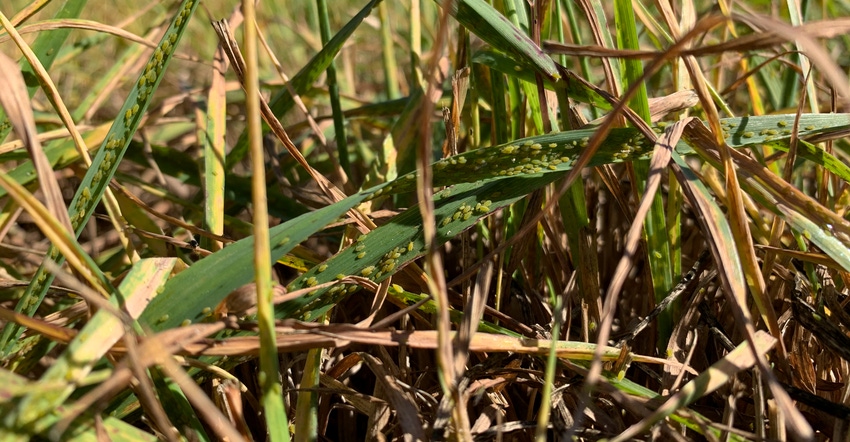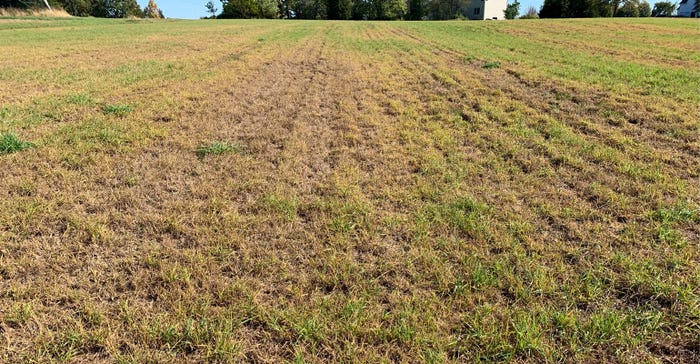
There are still corn and soybeans to be harvested, and much of the region’s small grains and winter wheat have likely been planted. But don’t take your eyes off those grass forages or small grains.
“Perennial grass forage crops and fall-seeded small grains are easy to ignore this time of year, but I encourage folks to walk these crops periodically to check them for insect infestations, particularly aphid populations,” according to a Penn State Extension crop update from John Tooker, professor of entomology.
When conditions are right, aphid populations can grow, and economically damaging populations can develop.
Aphids can be found on most grass crops, he says, including timothy, barley, rye and wheat. Several aphid species — English grain aphid, greenbug, bird cherry-oat aphid — can be found, but they all can be managed about the same, he says.
The first step is to scout. If they are above economic thresholds in a field — 25 aphids per foot of row — then spraying is recommended.
If large aphid populations are in the fields, this can cause small grains to turn yellow, brown or purple at the tips, slowly spreading down the plant.
But beyond changing the colors of your wheat or barley, aphids are also a big carrier of barley yellow dwarf virus, which can be carried by up to 20 different aphid species, according to University of Nebraska Extension. Aphids acquire the virus by feeding on infected plants, then transmitting the virus in subsequent feedings. Wheat and barley are greater risk for barley yellow dwarf virus.

YELLOW DAMAGE: If large aphid populations are in fields it can cause small grains to turn yellow, brown or purple at the tips, slowly spreading down the plant. (Photo by Andrew Frankenfield)
The barley yellow dwarf virus pathogen might not be evident until spring, but aphids can acquire it in fall.
“Small populations of aphids, no matter the time of year, are usually not a problem because these small, sedentary, soft-bodied insects are sitting ducks for many common predators like lady beetles and damsel bugs,” according to Tooker. “But in fall, natural-enemy populations reduce their activity because of colder temperatures, and even a few frosts, while aphid populations are more resilient and able to withstand the cold temperature longer, providing them a window of predator-free time.”
About the Author(s)
You May Also Like






